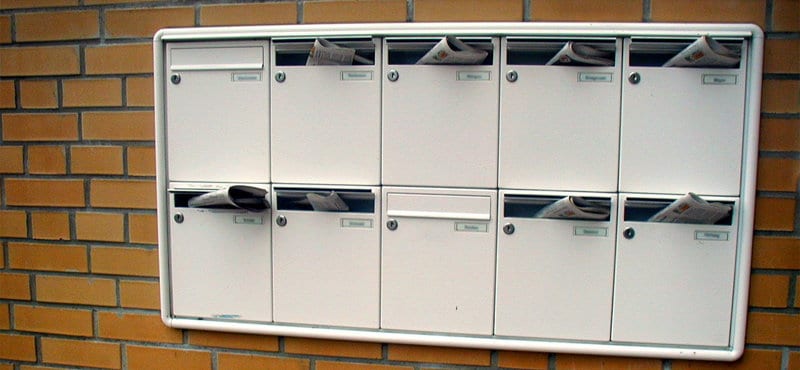In order to build a website or set up email accounts, there is some digital ground to break to stake your place online. Just like building a physical storefront, creating your digital presence requires different services and components that are not as simple as they may seem at first glance.
Your domain name needs to connect to a name server or DNS to tell it which hosting server to look so it can load your website or app and where to direct your email to.
If you’ve never done this before you might not realize the difference between these components that work together in the background to make up your digital plot of land.
We’ll cover them below to give you a better understanding of how it all fits together.

Domain Name
Your domain name is like your address online. It’s one of a kind and it connects you to the internet, just like an address in real life!
There’s many options available when choosing a domain name, such as what TLD (Top Level Domain) extension to get. These can include .com, .ca, .org, .info, etc.
Just like your physical address, if someone types in your domain name online, they’ll find your website with help from your DNS settings.

DNS (Domain Name Server)
Your domain name points to a name server where your zone file resides. Name servers can point back to the registrar, a 3rd party service such as CloudFlare or more commonly it points to your hosting provider. Typically you’ll be given 2 or more name server records to point your domain name to, a primary and a secondary. These usually look like: ns1.[servername].com and ns2.[servername].com.
Zone File
The zone file is like a switchboard or directory. It has records pointing to:
- A – Address records – IP Address
- CNAME – Canonical Name Record (Alias of one name to another)
- MX – Mail Exchange Records (Email provider)
- txt – Text record (used for verification or settings)
- and more
These records act as a switch board to tell the servers where to find your hosting, email, sub-domains or to verify that you own a domain. You need to be incredibly careful editing these records as it’s easy to break if you make a mistake somewhere. Your web agency, IT provider, or even hosting provider can typically help you with these. Changes to these records can take up to 24 hours, so be careful as a mistake can mean you’re offline for a day or more until the issue is fixed.

Hosting
Your online residence. With a hosting server, you get a home on the web where anyone in any part of the globe can come visit your website by typing in your domain name.
What kind of hosting do I need?
There’s a few different types of hosting option available, depending on your needs.
Shared Hosting Platforms
Shared hosting is the most common type of hosting and is typically low cost as well, making them an excellent option for beginners who don’t want to spend too much money on their first website without knowing if it will be successful or not. The downside is that the servers may have hundreds of websites going at once which means your site might run slowly depending on how many other sites are using up resources at any given time. This isn’t so bad though because you’ll still get all the features from some more expensive hosts like databases, email accounts, FTP access,etc.
Think of this like a mall, where many different businesses are all in the same location, with everyone using the same resources (parking, electricity, etc).
Virtual Private Server (VPS)
This option is great for users who want more control, but don’t want the cost of a dedicated server. A great choice for more advanced users or those who want specific software or packages installed on the server. Depending on who owns the VPS, you could be sharing resources with other websites, but it won’t be to the same degree as a shared hosting platform.
This can be similar to a business complex where several businesses are all within the same building, you’re still sharing some resources but with a smaller number of businesses.
Dedicated Server
This option gives you the most control and there’s no sharing involved. It’s only your website on the server. You have complete control over the server letting you control everything from security to the operating system that you run. This is one of the most expensive hosting options available but if you have a high traffic website, it might be something you want to look into getting along with hiring an admin to maintain the server.
This would be your own commercial building, something that you own and can do whatever you want with.
Other Hosting Options
There’s others types of hosting such as Cloud Hosting and Managed Hosting, but we just want to give you a brief overview of what a hosting server is and the types available. When working with clients, we help them determine the best hosting option for their website.
My domain, DNS, and Hosting are set up.. now what?
Once these three components are set up, we can start to set up your online presence! First, you’ll want to set up a mailbox (email) before you start filling up your storefront (website). We’ll cover these briefly.

Email Hosting
Your mailbox. The service that takes care of your professional emails, those using your domain name. This can be done through your hosting provider (ie: a mailbox in front of your location) or through a dedicated email platform (ie: community mailbox, separate from your location).
We recommend using a dedicated email platform for your email, such as Google Workspaces or Office 365. With these services you’ll have less issues with email deliverability, better spam filtering, more storage space, and it’ll be much easier to set up across all your devices.
We do not recommend using generic email addresses such as gmail, hotmail, yahoo, or emails with your Internet Service Provider such as Shaw/Rogers or TBayTel here in Thunder Bay. These email addresses make you appear less professional and you don’t actually own them.
Website or Web Application
Your website is your products or what you have on display for customers in your storefront. Your website is made up of files stored on your hosting platform. These files are what make up your website. It can be as simple as hand-coded html files to more complex content management systems with databases such as WordPress or an ecommerce system.
Summary
You’ve now got an idea of what domain names, DNS, and hosting are and how they work together to give your business a home online.
- Domain domain name is your address online.
- DNS (Zone file) is like a switchboard or directory that connects all your services
- Hosting is your online residence
- Shared Hosting – A mall-like setting
- VPS – A business complex setting
- Dedicated Server – Your own building
- Email hosting is your online mailbox
- Website is what’s in your store – your products or what you have on display for customers
I recommend that you keep your domain, hosting, and email services separate and purchased under your business name, not 3rd party. Remember that these services are the foundation to staking your place online for your business for years to come.

